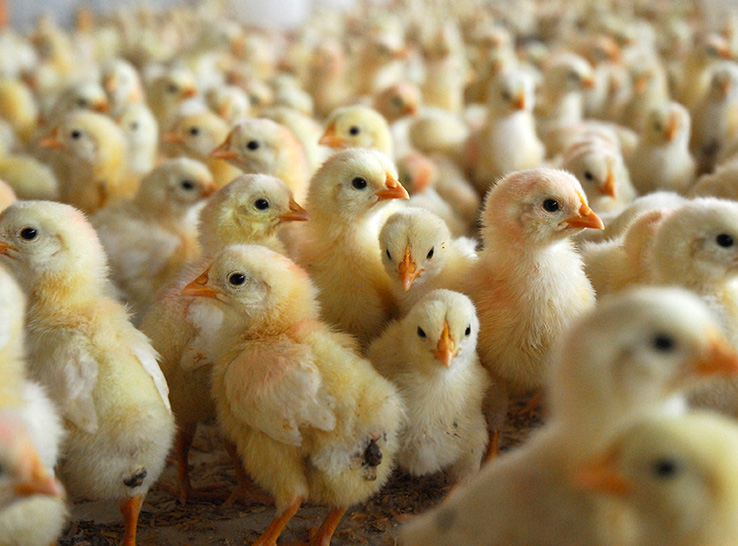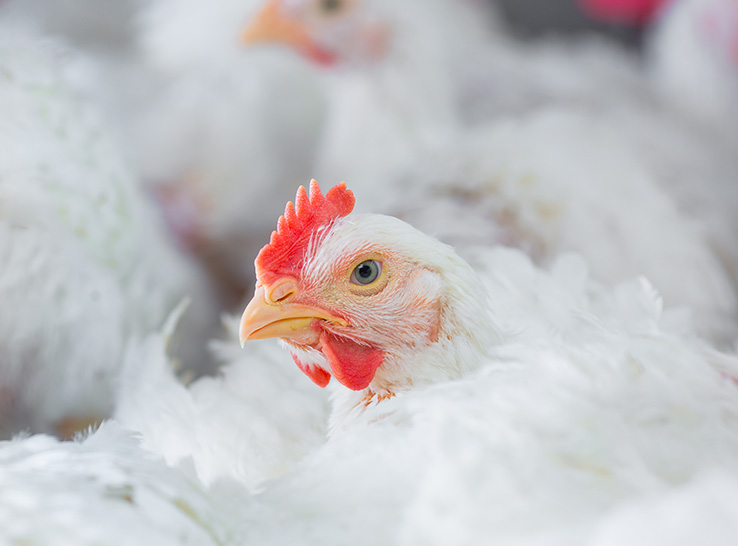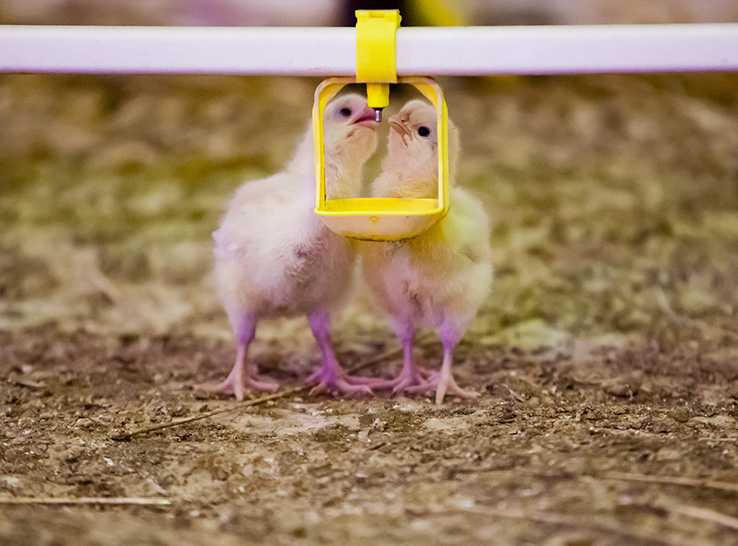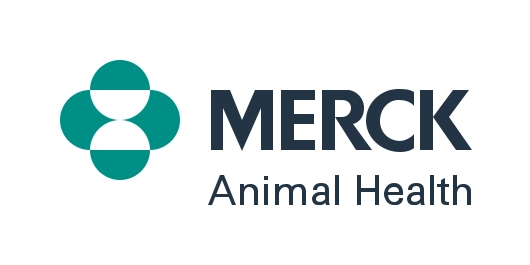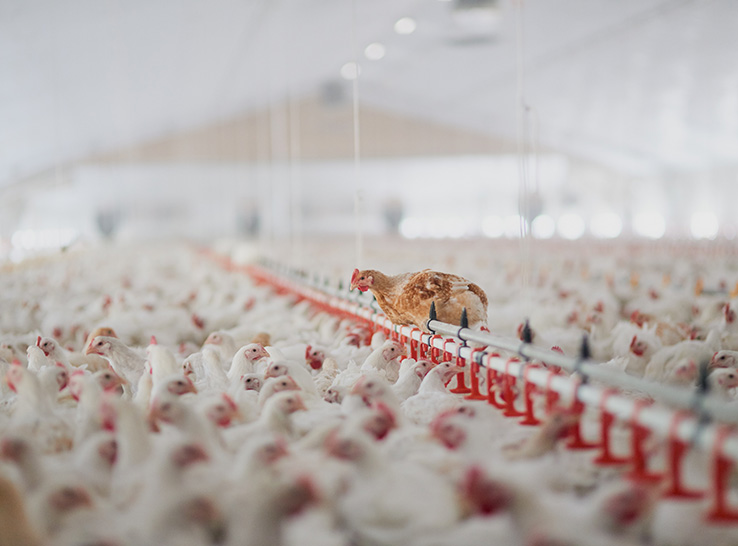 Since it was first isolated in broiler flocks on the Delmarva Peninsula, the latest mutation of infectious bronchitis virus (IBV), DMV/1639, has spread through the eastern seaboard of the US and west toward Mississippi and Texas.
Since it was first isolated in broiler flocks on the Delmarva Peninsula, the latest mutation of infectious bronchitis virus (IBV), DMV/1639, has spread through the eastern seaboard of the US and west toward Mississippi and Texas.
Initially, flocks infected with DMV/1639 produced large amounts of wet litter caused by affected birds flushing nonconcentrated urine.
Over time, however, the virus mutated further and more flocks emerged with classic respiratory symptoms and fewer with the so-called “kidney” presentation. Infections with DMV/1639 eventually moved down the eastern US seaboard then west to Mississippi and Texas.
“The clinical presentation in broilers changed almost exclusively to respiratory signs,” recalls Blayne Mozisek, DVM, Merck Animal Health, “but that didn’t make it any easier for producers to control.
“To this day, many questions remain about how to protect flocks against this variant with existing vaccines made with older but still common variants of IBV.”
Two studies
To address this need, Merck Animal Health conducted two field trials in commercial broiler-production systems in Texas and Alabama with Mildvac-Ma5™, a live-virus vaccine that aids in the prevention of disease due to Massachusetts-type bronchitis virus in chickens.
Mildvac-Ma5 — which is lyophilized, not frozen — is approved for administration to birds 1 day of age or older. As the name implies, Mildvac-Ma5 offers low reactivity in chickens, typically causing only mild reactions (if any) and/or minimal stress without sacrificing efficacy.
“Because the vaccine generates cross-protecting antibodies that help provide wide coverage across multiple strains, we wanted to see how birds vaccinated with Mildvac-Ma5 would perform in the presence of DMV/1639,” Mozisek explains.
Trial 1: Texas broiler complex
The first trial involved a broiler complex in Texas that produced 4.2-pound birds in a 31- to 32-day grow-out. The system had maintained IBV control through vaccination for more than a decade. However, in summer 2020, increased severity of respiratory pressure, higher mortality and culls corresponded with isolation of DMV/1639 within the flock.
Mildvac-Ma5 was added to the system’s standard hatchery IBV vaccination protocol in February 2021. Bird health and productivity following the vaccine adjustment were tracked for 5 months. It’s worth noting that a major winter storm produced rolling blackouts and record-setting cold immediately after the new vaccine program began, which limited some of the early data.
“Mortality did not rise as a result of the vaccine change, and cumulative culls were substantially lower by 1.21 percentage points for birds vaccinated with Mildvac-Ma5,” Mozisek reports. “From an economic standpoint, significantly more broilers went to market, which resulted in more efficient use of feed and resources.”
Birds were posted throughout the study period for purposes of DMV/1639 surveillance. “Birds vaccinated with Mildvac-Ma5 showed a significant reduction in viral shedding compared to the previous vaccine regimen,” Mozisek adds. “This was particularly true in younger birds, and the benefits continued through grow-out.”
It’s also notable that the flock’s respiratory index made an impressive rebound following the addition of Mildvac-Ma5, further confirming the positive impact of the vaccine under commercial field conditions with active DMV/1639 pressure, Mozisek notes.
Trial 2: Alabama broiler complex (nine farms)
The second trial involved nine farms in Alabama within a commercial broiler complex that had a history of naturally occurring DMV/1639 field challenges. The objectives were to conduct vaccine- and field-virus surveillance during grow-out and monitor flock performance. Four farms used IBron (Ceva), a vaccine containing the Georgia serotype (GA/08) of IBV, in their chick-vaccination program, while the other five farms incorporated Mildvac-Ma5.
The surveillance results showed that both vaccines were effective in protecting against DMV/1639. However, there were differences in vaccine-virus response. The GA/08 virus exposed to the flock by IBron never cleared from the birds. “It continued to grow in abundance, so the birds were dealing with the vaccine virus all the way to market,” Mozisek says.
On the other hand, the Massachusetts virus in Mildvac-Ma5 peaked before day 21 and fully cleared from the birds before 30 days.
From a productivity standpoint, bodyweight, average daily gain and bird survivability all improved substantially for the flocks vaccinated with Mildvac-Ma5. Compared with the birds vaccinated with IBron, the Mildvac-Ma5 flocks recorded 4.09% heavier weights and 1.20% higher survival rates (Figure 1).
“The trial results illustrate Mildvac-Ma5 vaccine’s ability to address the DMV/1639 variant and benefit bird productivity through higher weight gain, reduced stress and improved survival — all adding up to direct financial benefits to the broiler farm,” Mozisek says.
For more details on the study, click here.
Figure 1. Performance of birds vaccinated with Mildvac-Ma5 and IBron

Source: Merck Animal Health tech bulletin, Utility and Performance of Mildvac-Ma5™ for IBV Vaccination of Broilers with DMV/1639 Field Challenge.
Editor’s note: Content on Modern Poultry’s Industry Insights pages is provided and/or commissioned by our sponsors, who assume full responsibility for its accuracy and compliance.

